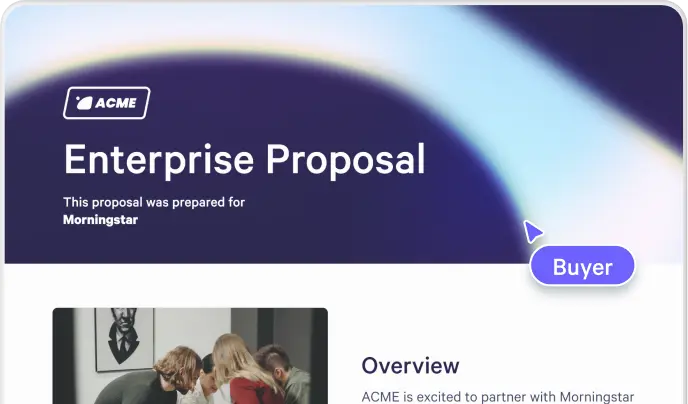
On this blog, we often talk about how crowded the SaaS market can be and how critically important it is to stand out. Having solid key differentiators and the messaging around them can be the difference between a prospect selecting your SaaS product instead of moving on to your competitors.
Another key criterion in the decision-making process can be your go-to-market (GTM) strategy or how you’re working on getting your product into the hands of customers who need your solution.
This article focuses on the different types of GTM strategies and how you can determine which GTM plan is right for your SaaS product.
What is a SaaS Go To Market (GTM) Strategy ?
A SaaS go-to-market strategy focuses on two things - who you’re selling to and how you plan to get the product into their hands.
Even though it has market in the name, the focus on marketing is a bit of a misnomer since the GTM strategy should be created with stakeholders from sales, marketing, customer success, RevOps, and even the product team.
The SaaS sales strategy is just one part of the go-to-market strategy, and all of the pieces of the puzzle need to be considered before releasing a new or updated product into an already crowded market.
Why is having an effective GTM strategy so important for SaaS businesses?
Having an effective GTM strategy can make or break your SaaS business (or at least as it pertains to a specific new product you’re releasing). Having a deep understanding of your target audience and focusing on the products that will resonate with them is critical before even starting to piece together a GTM strategy.
Once that has been addressed, deciding how (and at what cost) you will release your product to users is how you’ll set yourself up for success. We’ll look at some different GTM strategies SaaS companies have used, and the pros and cons of each, to ensure you have all the information you need to choose the right one for you.
Which GTM strategy fits your product or service best?
According to the Science of Revenue, “GTM models of Marketing, Sales, and Customer Success are aligned based on number of deals per year and ACV, in order to deliver the best customer experience at the right cost to serve. They outline a number of models for marketing, sales, and customer success. “
Sales Models
Product Led Growth
In this GTM model, the product itself acts as the sales and marketing function. This might look like Dropbox, offering increased storage to users who refer new customers. Or, the way HubSpot offers a freemium model to customers and then sells upgrades once they’re hooked.
1-Stage
The 1-stage SaaS sales model is where sales are handled by one inside sales rep. This model works best for more transactional or smaller sales.
2-Stage
In a 2-stage sales model, the prospect is first qualified (by a BDR/SDR) and then once qualifications have been established, the sales process is handed off to an account executive to close it. This is often the case with SaaS products and other types of complex sales.
Field Sales
In a field sales model, reps are distributed by geography, vertical, or both and usually handle sales for a few hundred accounts. You might see this with larger and more established SaaS companies or even hardware companies like Dell.
Named Accounts
Enterprise SaaS sales teams are good candidates for this GTM strategy as, here, sellers will handle a very specific set of named accounts. These are usually sellers who sell into the Fortune 500, Higher Education (handling specific institutions), or even tourism and hospitality (handling specific hotels/lodging types or destinations. This is known as account-based sales.
Marketing Models
Inbound
Typically done through SEO, content, and events, this GTM strategy is not highly targeted and is more like a magnet, drawing in a variety of prospects who might be interested in your product. If you’re looking for an example of this, you’re currently experiencing one by reading this blog post! If you want another example, check out a Qwilr-hosted webinar (and no, this is not just a shameless plug; its a really good example).
Prospecting
While this model does start to incorporate some personalization, it’s more of a 1:many play. In a prospecting situation, you’re sending tailored (but not individual) messages to segments of customers based on their persona. For example, this could be a project management tool sending messages with case studies specific to marketing teams, digital agencies and accounting teams.
Account-Based
In the SaaS account-based marketing model, you want to narrow in on a few specific accounts (1:few) with targeted messaging addressing the most pressing needs of those accounts. In this model, you might target multiple decision-makers within the accounts. For example, messaging for the C-suite, finance, and operations.
Targeting
In a targeting model, you will reach out to a very specific list with very personalized messages. This could be based on need, pain point, or specific stage of the sales process. For example, you could try inviting individual customers to a webinar, demo, or some other event or sharing research results from an in-house study.
Customer Success Models
Community
In this model, you’ll generally find an online forum or community on a platform like Slack or Circle where users (read: paying customers) can find support, learn about best practices, or network. Asana’s ambassador program and Softr.io’s Slack workspace are good examples of this.
Help desk
A help desk model might leverage a combination of chatbot and human support team members who can answer questions via live chat or through a ticketing system.
Volume
This model is led by the Customer Success team and accounts are split between customer success managers, each of whom might handle hundreds of small accounts.
Segment
As it sounds, accounts, which are still handled by customer success managers, are segmented by a specific geography or vertical. This might mean a CSM specializes in mid-market accounts, North American Accounts, or CPG accounts.
Accounts
Like volume and segment, the account model is also led by CSMs - in this model, each CSM would handle only a small group of enterprise accounts.
How to create a SaaS GTM strategy
Creating a GTM strategy for your own SaaS product may seem overwhelming. There are many ways to get your product into the hands of users, but users have more choices than ever about the products and services they want to use.
These steps will help you set the right strategy to help get your product into the hands of the right users for years to come. Startups can especially benefit from spending time on this process prior to launch to ensure a good first impression. So, if you’re a startup leadership team member reading this, pay close attention!
1. Research your total addressable market (TAM)
Determining how many potential customers you might have can help you determine which models to use when designing your go-to-market strategy. Starting with a little market research will go a long way. If your product will only help enterprise clients in a specific variable, you’ll want a more specific strategy for starting your outreach than splashy marketing campaigns and big, branded signage (like at a sports complex).
2. Narrow down to your target market
You can’t be everything to everyone, especially not early on. So, it’s important that you narrow down your target market to the subset you want to focus on. Doing this correctly can give you a competitive advantage and help lower the customer acquisition costs (when we get there). But if you think you can (or want to) go after more than one subset of your audience, create a roadmap to determine when it will make sense to add additional audiences, use cases, and/or marketing channels to reach them.
3. Consider your buyer personas or ideal customer profile
Once you’ve narrowed down your target market, it’s time to get more specific. Who does your SaaS product help? It’s time to consider who you’ll be selling to and think about getting a bit more personal. You can use LinkedIn and other forms of social media to learn more about your target audience.
- Are they predominately male or female?
- What is their title generally?
- How old are they?
- What is their educational experience?
- What kind of lifestyle do they have? Are there specific hobbies or interests they gravitate to outside of work?
Creating a persona or ideal customer profile (ICP) you’re selling to can help you with the next steps in the process. As you move forward with developing your GTM strategy, think about your persona and how they might respond to your product based on the strategy you’re using to get it into their hands. Will the messaging and pricing model (more on that next) resonate?
Do you have product-market fit? Does your SaaS product solve critical pain points for your persona and help them drive their businesses and careers forward?
4. Define your solution and pricing options
Now that you know who you’re selling to (and obviously what your software does). It’s time to think about how you talk about these and get it into the hands of users.
If you have a tool that can be highly customized, you might consider some packages with your most popular features (aimed at specific user groups) and pricing tiers that correspond. The more basic functionality might be a lower monthly fee, and the fully loaded version would cost more. And maybe there’s a tier in between to attract users who need more than the basics but less than the fully loaded version. We’ve written pretty extensively about pricing strategies in another article - so now might be a good time to pause and read that before you move on to the next step.
5. Determine which go-to-market strategies are best aligned with your target and their wants and needs
Based on all of the information you’ve gathered, now you want to think through what makes the most sense for your SaaS product in terms of marketing, sales, and customer success GTM strategies.
For example, if your product is more transactional, like a personal finance tool, you might consider combining a product-led growth sales model with an inbound marketing model and a helpdesk. Your content will drive potential users to your product, the product itself will bring in sales via upgrades to a paid subscription, and users will self-service and troubleshoot with a knowledge base and helpdesk.
Conversely, if your SaaS product is a scheduling tool for large, higher educational institutions in the United States and Canada, you might consider named accounts as your sales strategy (it's not that hard to determine who all the larger players are), targeting as your marketing strategy (again - there is a defined list...), and an account management strategy with designated managers for customer success.
Once you’ve decided which strategies should be the most effective, you’ll be able to develop a more tangible action plan for each.
6. Create messaging and launch your product
Once you’ve locked in on the strategies you want to employ, it’s time to create the messaging. This might include landing pages, blog content, webinars, personalized emails and collateral, templated proposals, and even community guidelines if you plan to leverage a community model.
The amount and type of content you need will be determined by the strategies you’ve elected to employ. For higher volume outreach, consider leveraging templates that can be customized by your sales or content marketing teams.
Qwilr has a helpful SaaS proposal template to help you get started.
7. Set KPIs or OKRs around the metrics that matter
Once you’ve set your go-to-market strategy and begun to deploy it, you might be wondering how it’s working for you. This is where having good KPIs or OKRs come into play. An effective go-to-market strategy should offer you a path to both sustainable growth and an increase in the customer lifetime value of your existing customers.
Beware of vanity metrics like inbound traffic. Just because people are coming to your website and looking at your content doesn’t mean their qualified leads are entering your sales funnel or converting.
Having data about your strategy’s performance that you can regularly evaluate will also help you with both optimization and the ability to streamline your efforts. This means focusing and doubling down on the content and touchpoints that are most effective, and starting to sunset anything that isn’t serving you or providing the best possible user experience for your target customer base.
8. Evaluate your progress and iterate
Your go-to-market strategy is not set in stone. When you’re regularly evaluating your progress and percentage of market share, you may start to see areas for improvement. In this vein, you should be gathering feedback from early customers who have signed on. Are you seeing any churn? If you are, when is it happening? Are you getting a lot of referrals? This might be a signal that your users are talking up your product to your peers.
Common pitfalls to avoid
When setting or recalibrating your SaaS GTM strategy there are many common pitfalls we see over and over again that can set up SaaS companies for failure. We’ve rounded up four of the most common to help shorten your learning curve and help you avoid them.
Using mismatched strategies
One of the more common pitfalls of creating a GTM strategy is having a mismatch between your sales, marketing, and customer success strategies. For example, using a two-stage sales process while relying entirely on inbound content.
These functions must work together to create one cohesive strategy.
Deploying resources to early in the growth cycle
When employing go-to-market strategies, it’s important that companies time their deployments correctly. Having multiple strategies kick off all at the same time can impact a company’s ability to create opportunities for sustainable growth.
We’ve all seen companies struggle under the crushing weight of growing pains with great ideas but insufficient staffing or experience to execute and sustain.
Spreading resources too thin
This pitfall can easily be coupled with deploying resources too early in the growth cycle, as that can contribute to resources being spread too thin. While it is typical of employees to wear many hats in a startup environment, it is a key factor in team members burning out, which can lead to further staff retention and recruitment challenges if your organization has a reputation for high staff turnover.
FAQ
What are the core elements of a SaaS go-to-market strategy?
The core elements of a SaaS go-to-market strategy are sales, marketing, and customer success. These three elements can work together to bring in new customers, increase the lifetime value of customers, and provide support across both the sales cycle and customer journey.
Leveraging your go-to-market strategy as a differentiator
In the world of B2B SaaS companies, a go to market plan can be a make or break for a product. It can mean the difference between building a loyal and successful user base that is wildly attached to the product and continues to purchase for years to come and having the buzz fizzle out shortly after the product launch.
If you’re looking for a tool to help support your sales and marketing efforts whether you’re launching a new product, entering a new market, or just looking to improve your strategy, look no further than Qwilr. From customizable collateral to full-blown proposals, Qwilr can help you execute your strategy and save time (and money). If you want to see how it works, book a demo today.
About the author

Brendan Connaughton|Head of Growth Marketing
Brendan heads up growth marketing and demand generation at Qwilr, overseeing performance marketing, SEO, and lifecycle initiatives. Brendan has been instrumental in developing go-to-market functions for a number of high-growth startups and challenger brands.




